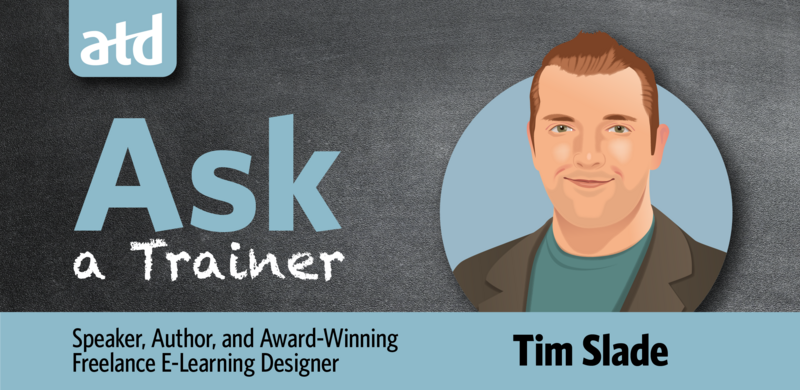ATD Blog
Ask a Trainer: How Should I Deliver Training to a Group of Multigenerational Learners?
Tue May 05 2020

Ask a Trainer is introducing guest posts where a talent development expert weighs in on a problem that trainers are facing. In this week’s post, Bruce Tulgan discusses delivering training to a multigenerational group of learners.
Dear Bruce,
I read the Ask a Trainer blog post from a few months ago about whether talent development professionals should consider generational learning styles when designing learning, and I have a related question. I’m a trainer, not an instructional designer, and I often train groups of learners that span many generations, and I’ve observed some differences among them. For example, younger learners seem to respond to a more conversational facilitation style and appreciate interaction, while older learners seem to be less bothered by lecture. I’ve also noticed that younger learners tend to take notes on their phones and laptops while older learners tend to take notes with a physical notebook. How much do these differences matter? When there are many different generations in one room, how can I take all their needs and preferences into account to deliver an effective training?
Let me start by saying that there is no question that people of different generations think, learn, and communicate differently. Some people have grown up thinking, learning, and communicating while attached to a handheld supercomputer. For emerging generations, this has informed their learning style, but it’s a mistake to assume that you have to gamify learning for young people and that old people need a notebook. In fact, some of the research on post-millennials shows that while technology has affected how they learn and communicate, the human elements—things like relationships and leadership—are also incredibly important to them. Parents, teachers, and counselors have been more engaged with the emerging generation today than at any other time, so the human element is an important piece of that puzzle in terms of their learning styles.
Plenty of older people have adjusted their way of thinking, learning, and communicating and they appreciate just-in-time learning. They can feel frustrated sitting in a classroom when they can learn what they need through a search engine. So, on the one hand, you want to be aware of the broad trends that shape differences in learning styles. On the other hand, I believe that if you go into a room with thousands of learners, there aren’t just four or five different categories of learners in the room, there are thousands.
I teach like an old-fashioned teacher, whether I’m in a small room with only 10 people or in a room with thousands. No matter what, I try to teach like I’m talking to each and every individual. Whenever possible, we survey the audience in advance to find out what’s bothering them and what their learning goals are. I look at that data to see if there are differences in learning goals across generations as well as whether factors like gender and industry may be affecting people’s learning goals.
All the data shows that the mode of learning that works best is mixed learning. The biggest mistake is to think older people want old-fashioned learning and young people want gamification. What is true is the younger the person, the more frustrated they become if the content being delivered is the same content they could just as easily find using a search engine.
_
_
Hear more of Bruce Tulgan’s insights on learning and leadership on the ATD Accidental Trainer podcast. His episode will air May 5, 2020.
_
_
If you have a question for Ask a Trainer, send it to [email protected]. You can find answers to previous questions by visiting the Ask a Trainer hub. Tim will be back next week to tackle a new question.
We welcome your comments and engagement on these posts. All posts are reviewed to ensure appropriateness based on ATD’s requirements for postings in our online communities.
Please note: Content shared in this column is provided by the author and may not reflect the perspectives of ATD.
More from ATD

